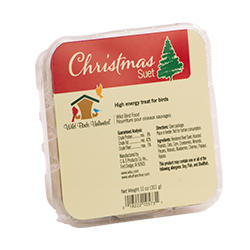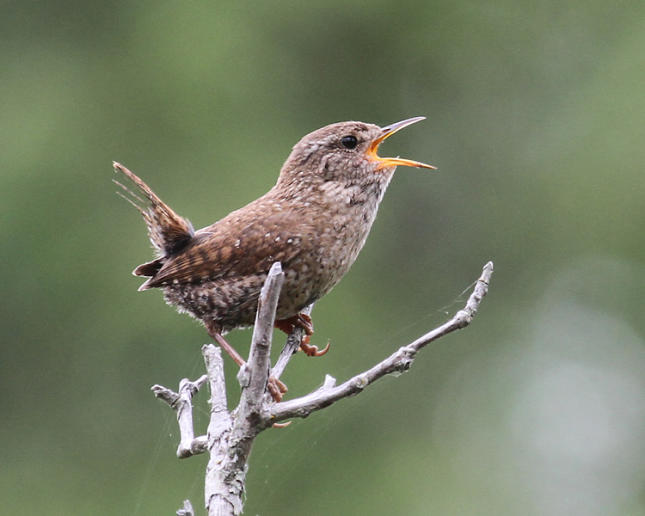In-Store Holiday Shopping Hours:
Wednesday Dec. 24: Closing early at 4 pm
Thursday Dec. 25: CLOSED for Christmas Day
Wednesday Dec. 31: Closing early at 4 pm
Thursday Jan. 1, 2026: CLOSED for New Year's Day

Shop Now for Holiday Gifts Sure to Bring Joy
Finding a meaningful holiday gift for friends and loved ones can be a real challenge. Whether it's an adorable seed character, a quality bird feeder or a beautiful bird bath, we have a variety of gifts for every nature lover on your list. Thoughtful, unique and sure to bring joy, these gifts give back to wildlife and the people you hold dear.
As we celebrate this special season, we thank you for continuing to support our store, nature and wildlife. We wish you and your family a wonderful and healthy holiday season!
20% OFF One Regularly-priced Item*
Promo Code: ENJOY20
*Valid in-store at the participating store(s) listed or by shopping online. One discount per purchase. Offer not valid on previous purchases, gift cards, optics, DSC memberships or sale items. May not be applied towards the purchase of electronic feeders, houses or accessories. Offer valid thru 12/24/25.

Offer Water to Help Birds Survive Winter
Winter isn't just cooler for us; it’s a real survival test for birds. With longer nights and colder temperatures, their internal "heaters" (metabolism) have to work overtime. While food is a must, water is just as critical. Birds need water to stay hydrated and to keep their feathers clean, essential for insulation and warmth.
A reliable source of open water can make your yard the go-to winter hangout, even for birds that don't normally visit feeders. If temperatures dip below freezing, you can use a bird bath heater in an existing plastic or stone bird bath, or try a bird bath with a built-in heater. The entire surface of a bird bath doesn't have to thaw, there just needs to be an opening big enough for birds to drink and bathe. You can support birds through winter, while attracting a greater variety of visitors to enjoy.
We have a full lineup of winter-ready bird baths and heaters that are bird-safe and easy to care for. Shop now and help birds stay hydrated, warm and winter-strong.

Give Birds a Super Winter
Winter is a wonderful time to feed the birds. Not only is a chance to help birds get the necessary fats for surviving longer nights and colder temperatures, but it's also a good time to see a variety of birds visiting you're feeders. Our Winter SuperBlend® is a high-fat seed blend, specifically formulated to provide birds the essential energy and fats needed to survive whatever winter throws at them.
Click on the images below to shop online
It’s Christmas for Your Backyard Birds
Full of peanuts, almonds and cranberries, our exclusive Christmas Suet is a high-calorie energy source that attracts birds such as woodpeckers, chickadees, titmice and nuthatches. And like all of our suet, Christmas Suet is rendered to eliminate impurities.
Shop inline HERE

Prevent Window Strikes and Help Save the Song Birds
Here’s a harsh truth: colliding with windows can be fatal for birds. Even if they manage to fly away, they're not just “stunned,” birds are often seriously injured. Windows reflecting sky or greenery trick birds into thinking there’s a clear flight path, and juvenile birds (who are just figuring things out) are especially at risk.
Preventing window strikes is one way you can help Save the Song Birds. With a few thoughtful adjustments, you can help birds recognize your windows as barriers, not passage ways.
- Feeder Placement: Place bird feeding stations within three feet (1 meter) of the window or beyond ten feet (3 meters). Within three feet, birds ‘fleeing’ the feeder area will not have built up enough speed to injure themselves if they strike the window. Beyond ten feet, birds will have enough time to spot and avoid the window.
- Visual Cues: Apply deterrents to your windows (such as screens or decals) to help birds see the barrier and give them a chance to take action before any harm is done.
- Install a Window Feeder: Use a window feeder to make birds more aware of the glass and so you have a front-row seat to watch your feathered visitors.
Go here to learn more, or stop by the store and we’ll walk you through the best ways to wipe out window strikes.
Go here to purchase window decals online

Wild Birds Unlimited in Winchester is your source for high quality Zeis Optics. With exceptional optical performance, these are perfect for bird watchers and all nature lovers.
Check out our range of optics here
NOVEMBER NATURE HAPPENINGS
Project Feeder Watch starts Saturday, November 14, and extends until April, www.birds.cornell.edu/pfw. Feeders get busier as the month progresses. Keep them full to attract migrants coming down from the north. Visit: https://feederwatch.org/
• To attract migrants, spread Bark Butter on the trunks of trees. Over 140 birds throughout North America are attracted to Bark Butter.
• Is this an irruption year? Start looking for new fall/winter visitors to your feeders such as Pine Siskin, Purple Finches and Red-breasted Nuthatches, Golden-crowned and Ruby-crowned Kinglets, Nashville and Yellow-rumped Warblers.
• Live in the forest? Check the tree trunks for Brown Creepers moving down scouring for insects. Usually they go for the biggest tree trunk available.
• Hummingbird feeders still filled? You never can predict who will be coming to your feeder. Watch for the Rufous Hummingbird traveling from Alaska through December.
• Going to Hawk Mountain in November? This month is peak migration for Golden Eagles, Red-tailed Hawks and Rough-legged Hawks.
• Waterfowl migration peaks this month. Lake Frederick and Abrams Creek will be a good area to spot Tundra Swans, American Widgeons, Gadwalls, Buffleheads, Hooded Mergansers and Ruddy Ducks. At the end of the month, look for Green-winged Teals.
• Listen for the Winter Wren singing in the morning when the sun crests the horizon.
• Open water is important if there's an early freeze. Put out heated bird baths for a winter water source.
• Witch-Hazel, also known as “winter Bloom” is the last shrub to bloom this year. Its exploding seed pods attract many birds. Sweet William and some thistles are also still in bloom.
• Persimmons ripen - delicious when ripe, astringent when unripe.
• Peak of deer breeding season, through December. Use caution while driving.
• Woodchucks, chipmunks, bears and bats will begin their hibernation throughout the month depending on climate conditions.
• Beavers are very active in the evenings while caching a winter supply of food.





